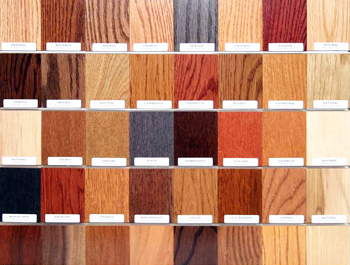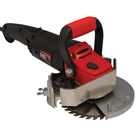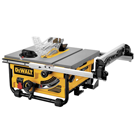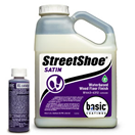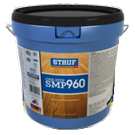FAQs
Click the categories below to view or hide questions and answers.
HARDWOOD FLOORSQ. What's the difference between a laminate and a hardwood floor?
A. Instead of describing the differences between laminate and hardwood floors, the advantages of each type of flooring will be discussed thoroughly below:
Advantages of hardwood floor:
Because hardwood is a natural product, it is environmentally friendly. In addition to increasing the value of your home, its durable nature makes it a lifetime guarantee of comfort and aesthetic pleasure.
Advantages of laminate floor:
Laminated floor does not fade or scratch very easily so it doesn't show wears and tears as much as hardwood floor does. With that being said, it also doesn't dent easily either.
Q. Is it okay to spill water on the hardwood floor?
A. Yes and no because it depends on the quantity of liquids-spilled overtime and whether it has been properly wiped and cleaned afterwards. If you spill a glass of water or coke on the hardwood floor, you can easily clean it with a paper towel so there will be no problem with the hardwood floor. If you spill a gallon of water or drip constantly over time, however, the hardwood will get water damage. You can tell water damages by touching the affected area with your hand. If you fill rough, warped, or a buckled feeling, it means that it has been water-damaged.
Q. What causes the cupping of a floor?
A. The cupping of the floor is due to excess moisture that forms from crawl spaces, basements, and/or from concrete slabs. In order to fix the problem of the cupping, you must first identify where the excess moisture is coming from and fix it. Then, proceed to use a moisture- meter to test the moisture level of the affected surface area to ensure that an appropriate and standardized level of moisture has been established. Once the hardwood floor has been dried, fill in the cracks and gaps with wood-putty and refinish the floor.
Q. Does a hardwood have a dye-lot like a carpet or a ceramic tile?
A. No because the hardwood is a natural product: the colors and grains are formed and shaped naturally. Stain colors of the hardwood may look differently on each pieces of the hardwood, but it is very normal and natural due to the fact that hardwood is a natural product. For that reason, it is able to provide warmth, beauty, and character to the overall room.
Q. How many square feet of a hardwood do you need in order to cover
100 square feet of a room?
A. There are no exact figures. In theory, you need about 107 square feet of a hardwood in order to cover 100 square feet. This means, you should take 7% as a waste. For a kitchen or a room with a triangular shape or lots of cornered rooms, you should take 10% as a waste.
Q. What can I do to fix a gap or squeaky floors?
A. If you have squeaky or loose floors, you can put a top nail on the hardwood floor and then refinish it after you have filled the holes with putty. If you have a gap between the boards, you can use a "smoothy" (inquire at K & K Floors of Chantilly, Inc. ) to fill the gaps and refinish the floor. But if the gap is too wide (1/4-inch or wider), the "smoothy" may fall into the gap. As a result, the only way to fix such a wide gap is to replace the floor.
Q. What is the difference between Red Oak and White Oak?
A. Visual appearance:
Red oak shows a pinkish tone when finish is applied whereas the white oak shows a yellowish-honey tone. A red-oak tester kit is available at K & K Floors of Chantilly, Inc. if one wants to be 100% sure.
Hardness:
Because white oak is denser than red oak, it is used more in heavy-traffic areas of the room.
Price:
Even though white oak is denser and stronger, its price is cheaper than the red oak due to its abundance in north America.
Q. How long does it take the finish to dry before I could walk on it?
A. It depends on several conditions. First, it depends on what kind of a finish you used. For an oil base finish, expect to walk on the floor at least 10-12 hours later. For a water base finish, expect to walk on the floor at least 6-8 hours. Second, it depends on the weather. If weather is humid, it takes a finish longer to dry. Third, it depends whether your heater or air conditioner is on or not. In Summer time, the finish dry faster if you turn on the air conditioner and in Winter time, the finish dry faster if you turn on the heater.
Q. How many coats does a pre-finish hardwood have?
A. They all vary from companies-to-companies and hardwood-to- hardwood. Generally speaking, if a hardwood has a 10-year warranty, it means that it has 3 to 4 coats of a finish. If the hardwood has a 15- year warranty, it means that it has 4 to 6 coats of a finish. If the hardwood has a 20 to 25-year warranty, it means that it has 6 to 8 coats of a finish. One thing I want to mention about the finish of a present pre-finished hardwood floor is that they have come a long way from a couple of years ago. Nowadays, pre-finished hardwood has aluminum oxide in the finish that not only makes it more durable, but it also lasts a lot longer than before.
Q. Can you sand a pre-finished hardwood floor?
A. Yes because they are no different from an unfinished hardwood when it comes to sanding and you may sand as much as 2 to 3 times. If a pre-finished hardwood is beveled, you may see the gap between the boards when you sand the hardwood.
Q. How should I clean my hardwood floor?
A. First, you need to sweep or vacuum the hardwood floor. Second, spray or spread the cleaner onto the floor and wipe it with a sponge or a fine-clothed mop. Do not allow puddles of the cleaner to remain on your floor and never use an urethane-finished cleaner on a wax-finished floor.
Q. How do I remove scuff marks and chewing gums?
A. You can first try by using mineral spirit (available at Home Depot or Lowe's) to remove the scuff marks and gums. If removal fails, please use Afta, which is a commercial-grade mineral spirit (inquire its availability at K & K Floors of Chantilly, Inc.).
LAMINATE FLOORS
Q. What is a laminate flooring?
A. Laminate floors are relatively new in the American floor-covering industry. Laminate flooring is a tongue and groove interlocking flooring system that floats on top of the existing sub floor. The sub floor can be a new wood sub floor, a concrete slab, an existing vinyl floor, or any other existing flooring types.
Laminate floor is not attached to the floor underneath. A special polyurethane padding is laid down prior to the new laminate flooring being installed, which prevents the glue from sticking to the sub floor.
It is very easy to install the floating floor. All that is required is a bead of specially formulated and water-resistant glue, which is used to be placed between the tongue and grooves of every plank to hold and seal the planks from moisture.
The product itself is basically made up of high-density fiber boards (HDF) that have a laminated and printed layer and a special backing that are used to secure to the core and then saturated in plastic-type resins, called melamine. The surface is extremely hard and therefore protects against any scratching, denting, sunlight fading, and even cigarette burns! Laminate floors are sold by the square foot and are generally a little pricier than most vinyl floors. Due to its any positive qualities, however, it is sure to provide you with many years of lasting beauty and quality.
Q. How do I clean my laminate floor?
A. Laminate flooring is made to be easy to clean. Consequently, no waxing is required. Regularly vacuuming or sweeping your laminate floor serve the purpose of general cleanliness. You can also choose to wipe your floor occasionally with a cloth mop or a damp cloth. Frequent cleaning with water is not necessary.
Q. Are laminate floors “pet-proof” and “scratch-proof?”
A. On “Pet-Proof”
Laminate floor is best-suited for households with pets. Pets usually don't scratch laminate floor. But because different pets have different habits and dirt and other particles may sometimes stick to their paws from playing outside, it's advised to trim their nails regularly to minimize any scratching on laminate floors.
On “Scratch-Proof”
Laminate flooring is very hard so it's very scratch-resistant. However, it is not "scratch-proof". To minimize scratching, place doormats or rugs by exterior doorways to collect dirt or gravel. Remove any sand or grid immediately. Use felt or similar protectors under furniture legs and other easily movable furniture to avoid floor scratches and always lift heavy objects when moving them instead of pulling or sliding them across the floor.
Q. Can a laminate flooring be easily repaired or replaced?
A. Scratches and mini-indentations can be repaired using a colored and putty-like substance made by various manufacturers. If significant damage occurs, you can simply replace the damaged plank or square.
Some manufacturers make a product that is installed by "snapping" the pieces together using a metal clip system that requires no glue. Replacing these types of floors is much easier. Just disassemble the affected area and re-install inserting a new piece of laminate flooring to replace the damaged one.
















